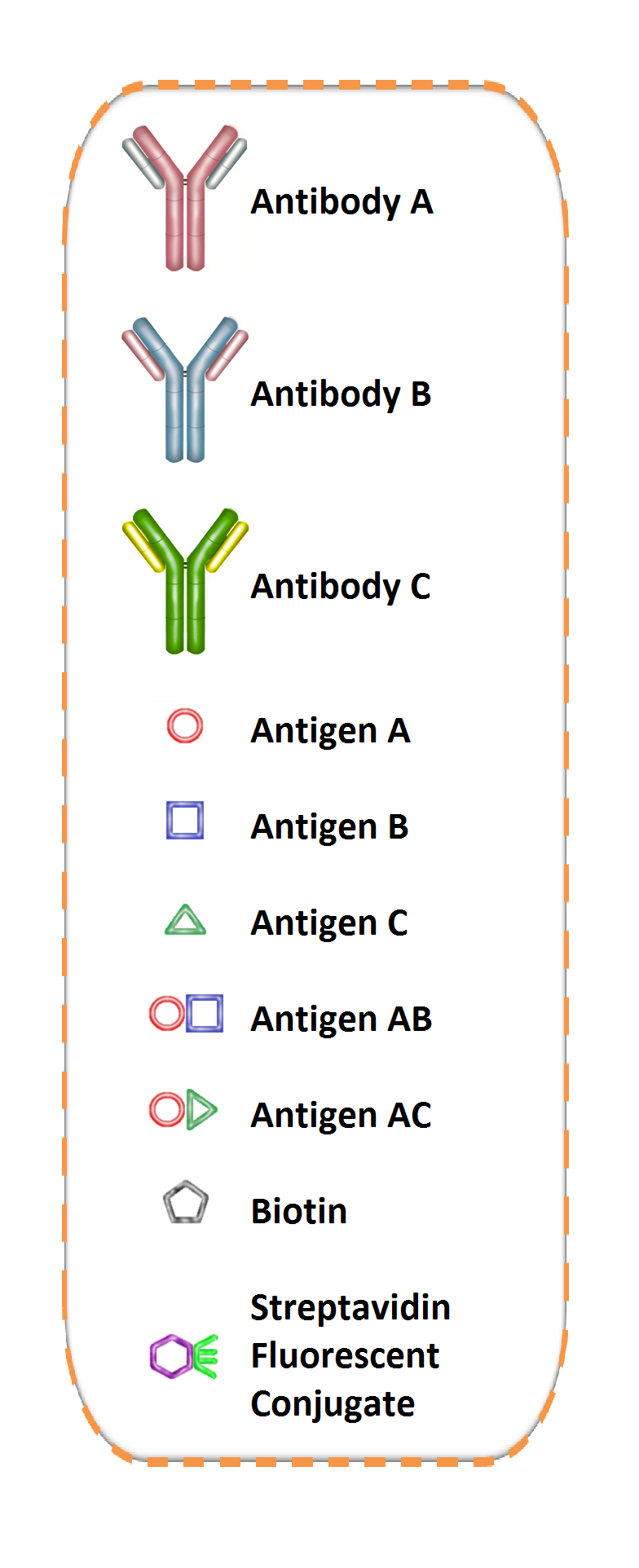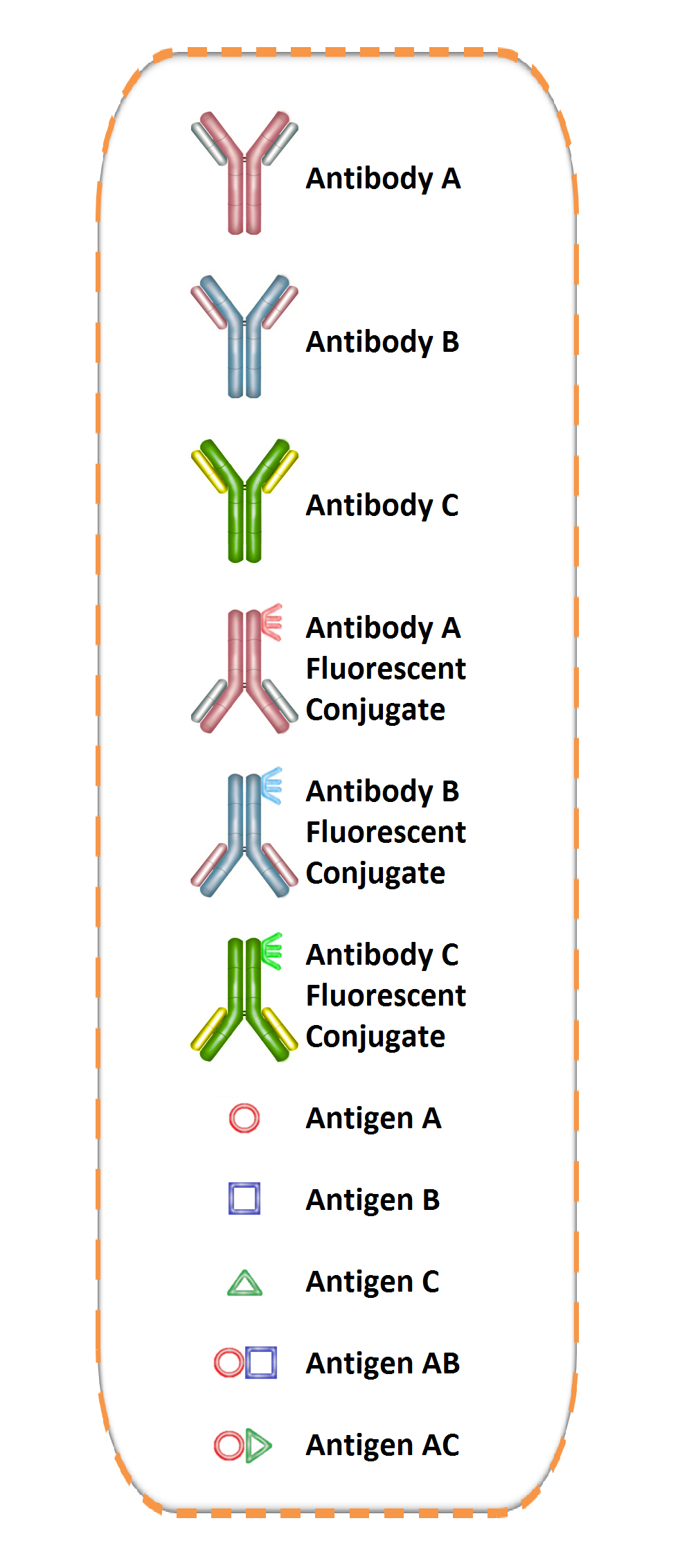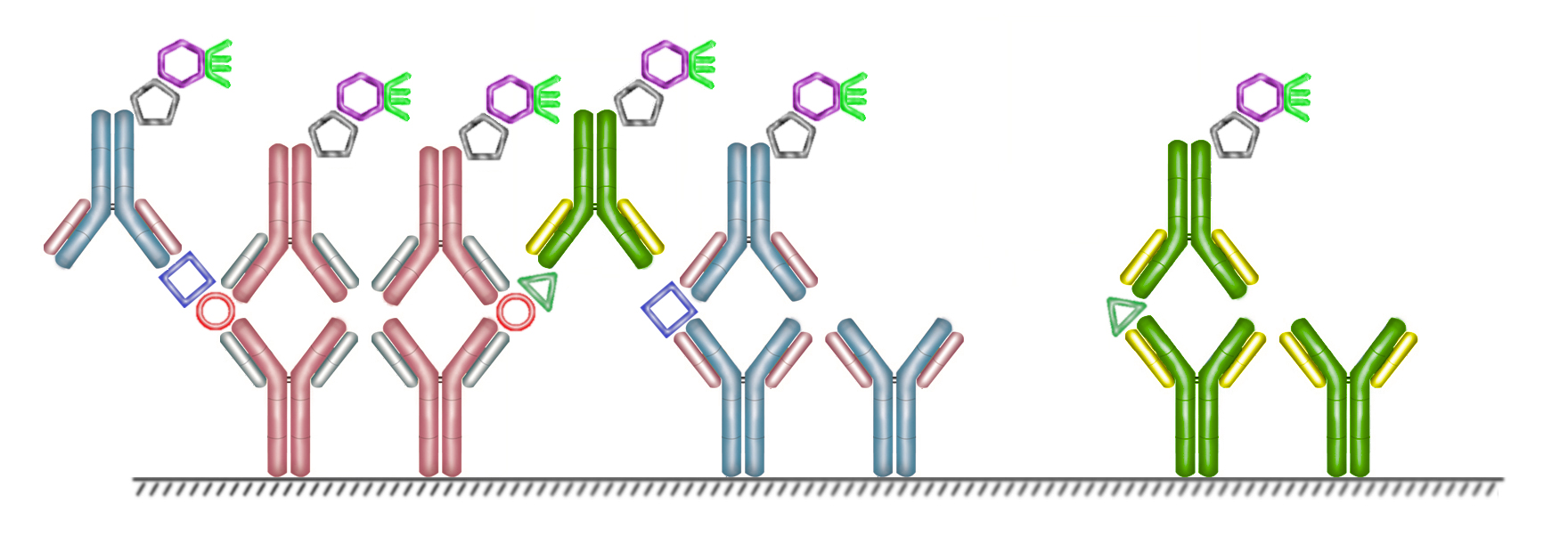Our AssayLite™ Products
Introduction
A multiplex immunoassay simultaneously measures multiple analytes in a single assay procedure. Fluorescent assays utilize a type of electromagnetic spectroscopy that analyzes fluorescence from a sample. There are two types of equipment that are used for this analysis: filter fluorometers and spectrofluorometers. Filter fluorometers use filters to isolate the incident light and fluorescent light. Spectrofluorometers use diffraction grating monochromators to isolate the incident light and fluorescent light. The patented AssayLite™ Multiplex Fluorescent Immunoassay uses different fluorescent colors as markers for each protein or antibody to generate a multiplex fluorescent immunoassay.
AssayLite™ Fluorescent Multiplex Kits
Assaypro multiplex fluorescent assay is based on a none array-based platform which can more accurately measure complex biomarkers in human fluids using patented technology. The biomarkers tend to bind to each other in the samples. The section below illustrates the potential problems with other array-based platform multiplex assays on the market.
Assaypro fluorescent multiplex assay kits have been validated against ELISA and other methods to ensure the measurement is comparable to ELISA performance. During the validation process, kits have been evaluated for CV, sample performance, cross-reactivity, dilution linearity, kit stability, etc.
Each AssayLite Multiplex kit includes:
• Antibody coated Microplate
• Sealing Films: Each kit contains 3 precut, pressure sensitive aluminum sealing films that can be cut to fit the format of the individual assay.
• Standard
• Fluorescent Probe (color includes: Red, Blue, Orange, Yellow)
• Diluent Concentrate (10x): A 10-fold concentrated buffered protein base (30 ml)
• Wash Buffer Concentrate (20x): A 20-fold concentrated buffered surfactant (30 ml)
• Stabilizing Solution
Key features of AssayLite Multiplex Kits:
• 96 strip-well plate similar to 96 strip-well plate using in ELISA kit
• Plate handling equipment in ELISA kit system can be used for this multiplex kits
• Using low cost fluorescent microplate readers
• Low cost with high throughput through put
• It is as accurate as single format ELISA kit
Potential problems with other array-based platform multiplex assays currently available on the market when proteins form a complex
Multiplex immunoassay kits currently available on the market are an array-type of multiplex. This type of multiplex divides different capture antibodies into an array. The difference between manufacturers on this type of assay is the support for the array. Some examples of current arrays include bead based arrays, biochip arrays, 96 well spot arrays, glass chip arrays, etc. For all of these, the assay mechanism is similar. All the antibodies in the array can bind to the sample loaded to the well with the array antibody. After binding to different antibodies, the detection antibody links to the fluorescent or luminescent probe and will report the signal from each antibody in the array. This type of system will work well when the desired protein does not form a complex with other proteins, such as cytokines. However, if the protein acts not only as a single form, but also as a complex form in the sample, it will create a number of problems if using this type of assay, especially when using this type of technology in measuring blood proteins. There are many proteins that bind to one another in plasma or other bodily fluids, such as PAI-1, PAI-1/tPA complex, and PAI/uPA complex.
Figure below illustrates potential problem with other array-based platform multiplex assays currently available on the market when proteins form a complex
|
 |
How AssayLite™ Fluorescent Multiplex Kit handles complex proteins in samples
|
 |
Mutiplex Assay Comparison (includes ELISA):
| ELISA | Luminex Technology | Meso Scale Discovery | Raybiotech | AssayLite™ Series | |
|---|---|---|---|---|---|
| Capture Antibody Support | 96 well Plate | Beads based | 96 well Plate | Glass Slides/ Membrane | 96 well Plate |
| Capture Antibody Array | No | Yes | Yes | Yes | No |
| Detection Antibody Label | Single | Single | Single | Single | Multiple |
| Enzyme-linked | Yes | No | Yes | Yes/No | No |
| Substrates | Yes | No | Yes | Yes/No | No |
| Reader | Absorbance Reader | Flow Cytometry | Chemiluminescence Scanner | Fluorescent Image Scanner/ Chemiluminescence Scanner | Fluorescent Intensity Reader |
| Assay Time | 2-5 hours | 3-6 hours | 3-6 hours | 3-6 hours | 2-5 hours |
| Data Quality | Data Quality | Semi-Quantitative/Quantitative | Quantitative | Semi-Quantitative/Quantitative | Quantitative |







